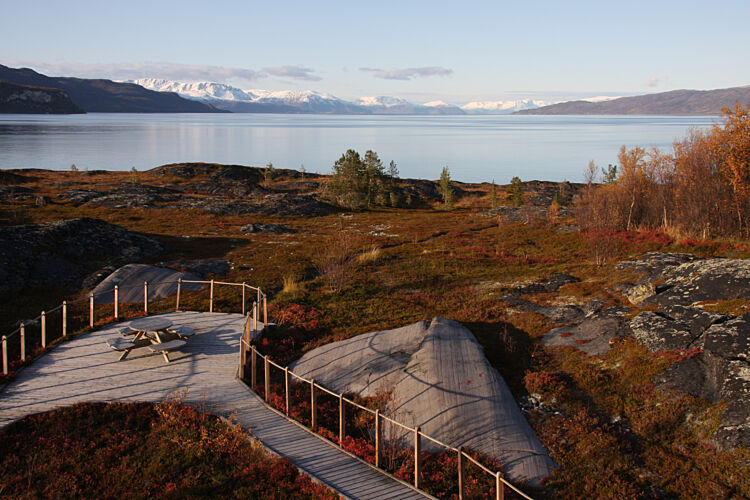Hjemmeluft
Hjemmeluft is the largest of the World Heritage sites in Alta, and the only one that has been made readily accessible to the general public. Along the pathways you can stroll through a landscape with wonderful views and an intriguing past stretching over 5000 years. Alta Museum, which is situated in Hjemmeluft, illustrates that story in a number of ways.

Most of the rock art in Alta, and especially in Hjemmeluft, suggests that this was an important meeting place for people who lived in the region. The long Altafjord connected inland and coastal communities and was a vital route for communication. When you visit Hjemmeluft, you can gain a good impression of the landscape which gave rise to the rock art.
Hjemmeluft is the largest area with rock art in Alta. Here there are more than 3000 carvings on rock surfaces on both sides of the bay, and there are also traces of prehistoric settlements in the area. A 3 km long pathway system connects the various rock carving sites, and will give you the experience of travelling through time, from the oldest rock carvings to the youngest.
The rock carvings in Hjemmeluft were made over a long period of time, from 7000 to 2000 years ago. During this period a number of major changes happened, and as a result we can now divide the carvings into different phases. Today the rock carvings are located between 8-25 metres above sea level, but when they were originally carved they were down by the shoreline. This is due to the land upheaval after the Ice Age, which caused new rock outcrops to rise from the sea. People preferred the vegetation-free smooth rock surfaces closest to the water. Could it be that these were the best places to communicate with spirits of the underworld?
In Hjemmeluft there is a huge selection of motifs and scenes. Hunting, trapping and fishing were, naturally enough, central themes because they were essential to the preservation of life for those who made the rock art. Various ways of hunting reindeer, bears, elks, whales and halibut are depicted here – the top five! But you will also find other species depicted, such as birds, dogs, wolves, foxes and hares. Another important motif in the Hjemmeluft carvings is that of the boats, which occur throughout the period. Bear dens and bear tracks, geometric figures, humans, and a wealth of objects and implements can also be seen in abundance.